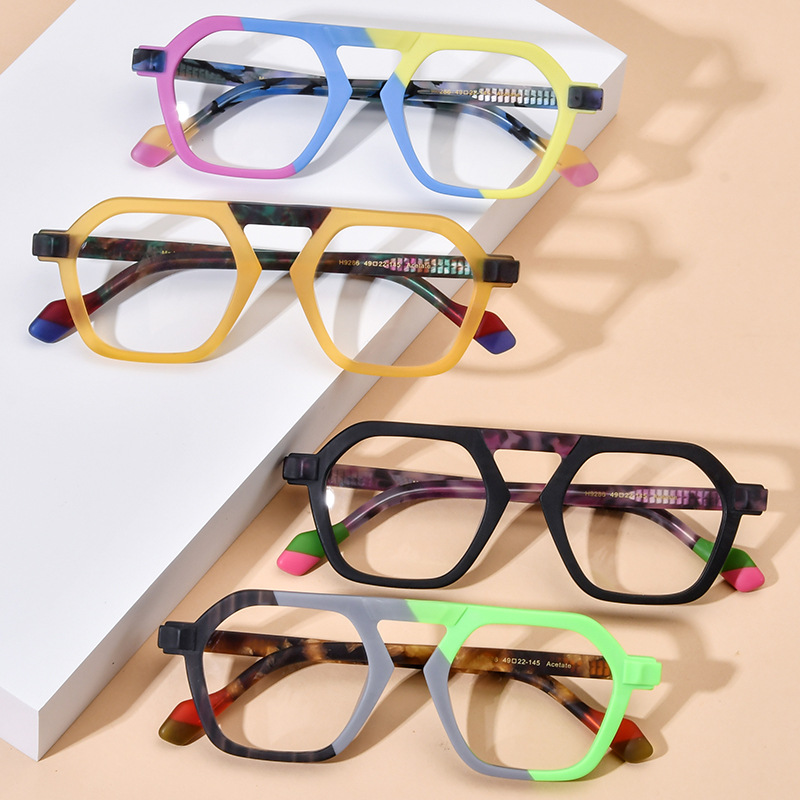When choosing glasses for children, you need to pay attention to some details in terms of lenses, frames, optometry, etc. The following is a specific introduction:
Lens selection
Material: The preferred choice of resin lenses, its light weight, not easy to break, can effectively reduce the burden of children’s nose bridge, reduce the risk of eye injury caused by broken lenses.
Function: Select the lens with the right function according to the child’s vision. For example, myopic children can consider lenses with anti-blue light and anti-fatigue functions, which can reduce the damage of electronic devices to the eyes and alleviate visual fatigue; For children with myopia prevention and control needs, functional lenses such as peripheral defocusing lenses can be selected.

Frame selection
Material: Frame material should be safe, lightweight and environmentally friendly. Common materials are plastic, metal and titanium alloys. Plastic frames have various styles, rich colors, light weight, and are not easy to be allergic; Titanium frames are stronger and lighter, but the price is relatively high. Avoid frames containing sensitive metals such as nickel to prevent skin allergies in children.
Size: The frame size should be moderate, based on the child’s face shape and pupil distance. Generally speaking, the width of the frame should be slightly wider than the width of the child’s face, to avoid too narrow pressure on the cheek; At the same time, the length of the mirror leg should be appropriate, not too long or too short, so as not to slip the glasses or pinch the ears.
Style: Choose a style that children like to help improve their compliance with wearing glasses. Can be selected according to the child’s gender, preferences, such as cartoon shape, bright color frames are usually more popular with children. At the same time, we should consider the stability and comfort of the frame, and try to choose the adjustable frame of the nose bracket, which can better adapt to the different nose types and facial development changes of children.
Optometric accuracy
Professional organizations: Be sure to take your child to a professional eye hospital or a qualified optician for optometry. Children’s eyes have a strong ability to adjust, so it is necessary to remove the adjustment factors of the eyes through mydriasis and optometry to obtain an accurate diopter number. Professional optometrists will choose the appropriate mydriatic drugs and optometry methods according to the child’s age, vision, etc.
Regular review: Children’s vision changes quickly, it is recommended to carry out a vision examination and optometry every six months to a year, and adjust the glasses in time to ensure that the glasses can continue to provide children with clear vision and good visual quality.
Other details
Anti-fog function: If the child is often active in the environment with a large temperature difference between indoor and outdoor, or easy to sweat, choosing a lens with anti-fog function can avoid lens fog affecting the sight, improve the convenience and safety of wearing.
Safety certification: To ensure that the purchased glasses meet the relevant safety standards, such as through the national glasses product quality supervision and inspection center testing. Qualified products have strict quality control in the optical properties of the lens and the physical properties of the frame, which can provide reliable protection for children’s eyes.
Post time: Apr-10-2025